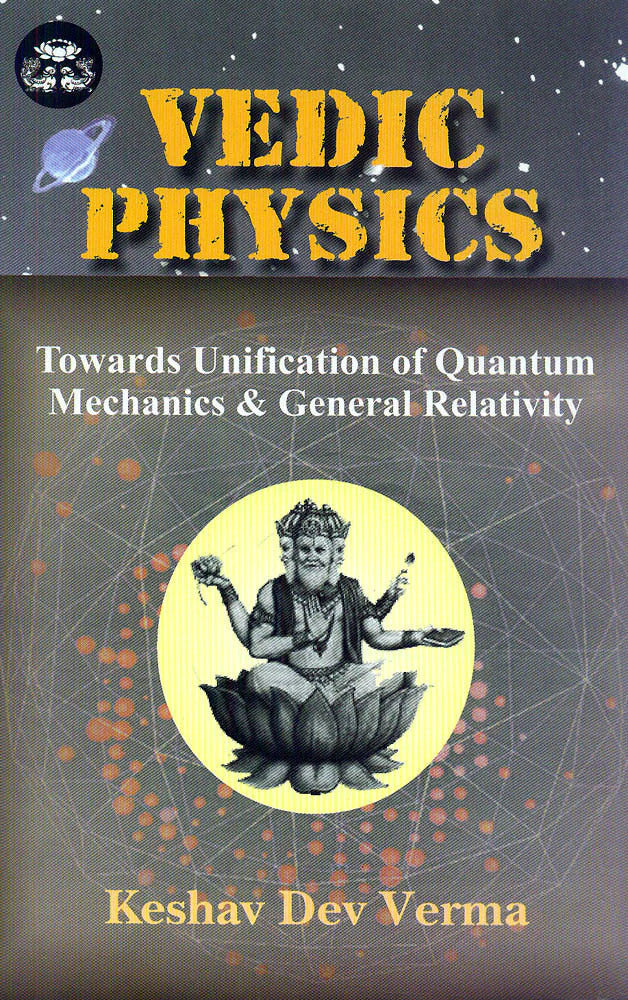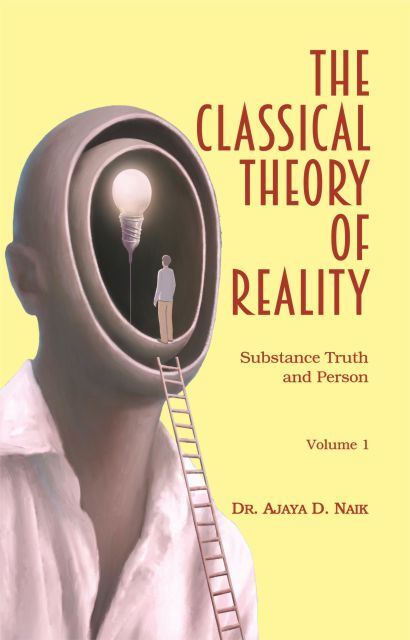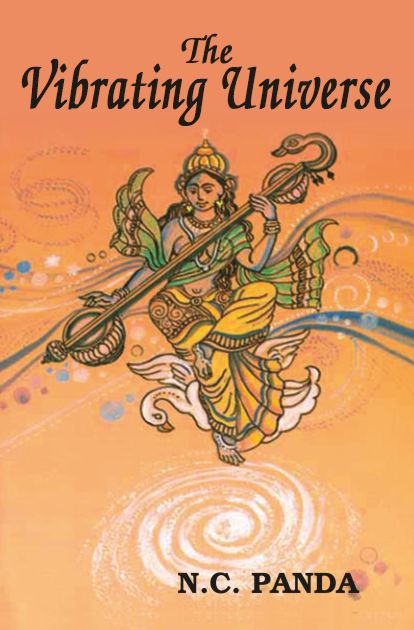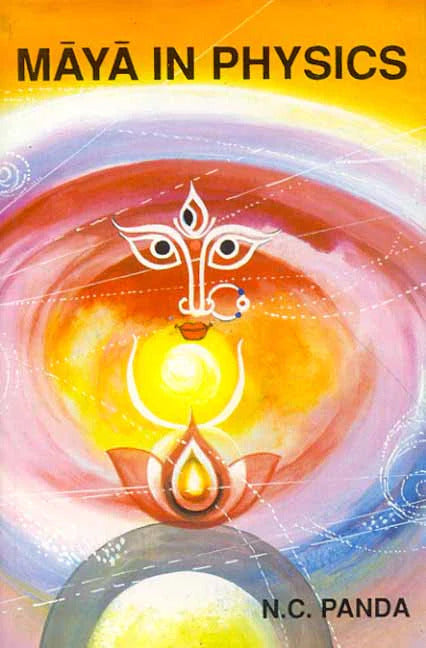

· By Motilal Banarsidass
Vedic Physics: Bridging the Gap Between Ancient Eastern Philosophy and Western Scientific Paradigms
With its roots in ancient texts like the Rigveda and the Upanishads, Vedic physics explores concepts such as the interconnectedness of all things, the nature of consciousness, and the fundamental oneness of the universe. Proponents argue that these concepts align with the latest discoveries in quantum physics and can provide valuable insights into the nature of reality beyond what traditional scientific methods can explain.
As we delve deeper into Vedic physics, we discover a fascinating world where ancient wisdom meets cutting-edge science, raising profound questions about the nature of existence and our place in the cosmos. Whether you are a believer or a sceptic, the exploration of Vedic physics invites us to expand our horizons and embrace new possibilities in our quest for understanding.
Understanding the ancient wisdom of the Vedas
The Vedas, written in Sanskrit and considered the oldest texts in Hinduism, are a rich source of knowledge and wisdom. Composed over 5,000 years ago, these scriptures contain a vast range of topics, including philosophy, spirituality, and cosmology. The Rigveda, for example, explores the nature of existence and the interconnectedness of all things. The Upanishads, on the other hand, delve deeper into the concepts of consciousness and the nature of reality.
Vedic physics draws upon the philosophical ideas presented in these ancient texts and combines them with scientific principles to create a holistic understanding of the universe. It seeks to uncover the underlying principles that govern the cosmos, offering a more comprehensive view of reality beyond what traditional scientific methods can explain.
Key principles of Vedic Physics
At the heart of Vedic physics lies the concept of interconnectedness. According to the Vedas, everything in the universe is connected, forming a vast web of interdependent relationships. This interconnectedness extends not only to living beings but also to inanimate objects and even abstract concepts. Vedic physics suggests that this interconnectedness is not merely metaphorical but has a tangible basis in the fundamental laws of the universe.
Another key principle of Vedic physics is the concept of consciousness. According to the Vedas, consciousness is not limited to human beings but is inherent in all forms of life. It is seen as the underlying force that animates the universe and gives rise to all phenomena. Vedic physics explores the nature of consciousness and its relationship to the physical world, offering a unique perspective that goes beyond the traditional scientific understanding of consciousness as a byproduct of brain activity.
Comparison between Vedic Physics and Western scientific paradigms
While Western science has made tremendous advancements in understanding the physical world, it often falls short when it comes to explaining the deeper aspects of existence. Vedic physics offers a complementary perspective, bridging the gap between the empirical methods of Western science and the philosophical insights of the Vedas.
One area where Vedic physics diverges from Western scientific paradigms is in its understanding of the nature of reality. While Western science tends to view reality as a collection of separate, independent entities, Vedic physics sees reality as a unified whole. It posits that everything in the universe is interconnected and that the underlying fabric of reality is consciousness itself.
The concept of consciousness in Vedic Physics
Consciousness plays a central role in Vedic physics, as it is seen as the fundamental building block of the universe. According to Vedic philosophy, consciousness is not limited to individual minds but is present in everything, from the smallest subatomic particles to the vast expanse of the cosmos.
Vedic physics proposes that consciousness is the underlying force that gives rise to the physical world. It suggests that consciousness is not a byproduct of matter but is, in fact, the source of all material phenomena. This perspective challenges the traditional scientific view that consciousness is an emergent property of complex biological systems.
Applications of Vedic Physics in modern science
While Vedic physics is still an emerging field of study, it has the potential to offer valuable insights and applications in various scientific disciplines. One area where Vedic physics can contribute is in the understanding of quantum phenomena. The interconnectedness and non-locality observed in quantum physics align with the concepts of Vedic physics, providing a framework for further exploration and understanding.
Vedic physics also has implications for fields such as biology and medicine. By considering the role of consciousness in the functioning of living organisms, Vedic physics offers a new perspective on health and well-being. It suggests that the mind-body connection is not merely a metaphor but has a tangible basis in the fundamental nature of reality.
Best Reference Books on Vedic Physics & Metaphysics
1. Vedic Physics: Towards Unification of Quantum Mechanics and General Relativity by Keshav Dev Verma
The present volume on Vedic Physics by Keshav Dev Verma is indeed a unique attempt to interpret ancient Indian literature by defining various symbols, concepts and terminology occurring in Vedic hymns and other texts. While accepting Maharsi Dayananda's view that Vedas are the repository of all true sciences, the author does examine this statement with a view to test it on the hard rock of truth.
Shri Verma has selected the Sankhya-Patanjala system that explains the physical world (Universe) on the basis of Cosmic evolution; the Vaisesika-Nyaya expounds the methodology and elaborates on the concepts of physics, chemistry and mechanics. Shri Verma has very systematically tried to interpret the Sankhya aphorisms and concludes that the ultimate ground to which the manifested world can be traced is Prakrti having three attributes-Sattva (existence), energy at rest or Rajas (energy that which is efficient in a phenomenon and is characterised by a tendency to move and overcome any resistance) and Tamas (mass or inertia) which resists the Rajas to do work and also resists Sattva from conscious manifestation.
Review(s)
- This work will certainly inspire other serious-minded scholars to undertake further research on this count and provide a deeper understanding of 'Atom' and the 'Universe'. I congratulate Sri Verma for producing this book.-Murli Manohar Joshi, in his Foreword
- K. D. Verma has demystified the Vedic hymns by decoding the symbols, technical terms and concepts, thereby many of the mute problems, some fundamental issues in Indian scientific tradition in general and in particular mathematics, astronomy, physics, material and life sciences, ...This being highly commendable, puts him in the list of illustrious predecessors.-Dr.S.N. Bhavsar, in his Introduction
- This book leaves undeniable marks and impressions that linger and recycle in the mind suggesting that there is something unique and novel that needs to be pursued. ...It compels one to continue to think.-Dr.B.D. Kulkarni, Director, National Chemical Laboratory, Pune
- This is a bold and brave book that will evoke and provoke both modern scientists as well as researchers of ancient Shastras to test their models in the light of the Vedic model which the author believes is the only valid and irrefutable model of reality.-Dr.Vijay Bhatkar, Renowned Computer Scientist, Pune
2. Vedic Physics: Scientific Origin of Hinduism by Raja Ram Mohan Roy, PhD
The Rgveda is the first book of humankind and the most sacred scripture of Hinduism. It also happens to be the most ill- understood book of our times. Despite the extensive study by academic and religious scholars, the purpose and meaning of the Rgveda and many ancient Hindu scriptures remain unclear. In this path breaking book, the discovery of the Rgveda as a book of ancient cosmology is described, and related to the seals of ancient Indus Valley Civilization, thereby challenging our perception of humanity.
The Vedas have always been lauded as containing the secrets of cosmogenesis. Raja Roy in his remarkable book shows how this is true not only from the yogic vision but according to the latest insights of modern physics. The book takes the reader on a vast panoramic journey through the universe of matter, mind and human history as well."
David Frawley (Vamadeva Shastri) Director, American Institute of Vedic Studies
Roy presents a new framework for the understanding of the Vedic hymns from the point of view of physics and then he draws parallels with recent theories on the nature of the universe. We celebrate the new path he has hewn through the bush of old scholarship.
3. The Classical Theory of Reality (Set of 4 books) by Dr. Ajaya D. Naik
This book is a synthesis of absolute idealism and Advaita Vedanta in particular and in general, it is a synthesis of Western philosophy with Indian philosophy. It covers issues in all five basic areas of philosophy metaphysics, epistemology, ethics, aesthetics, and logic, and suggests answers to many problems in them. The solutions offered are in terms of Advaita Vedanta and absolute idealism solutions as the ideal ones. (Vol.1) Substance Truth and Person, (Vol. 2) Perfecting Reality (Vol. 3) Practical Implication (Vol. 4)The Idealist.
Foreword
Metaphysics is the most basic part of philosophy, and possibly the most controversial. In the West, it flourished in Ancient Greece, late Rome, and medieval universities. During the Renaissance, it floundered and was resurrected in the seventeenth century, most notably by Descartes, Leibniz, Spinoza, and Bishop Berkeley. Under the scrutiny of Locke, Hume, and later Kant, metaphysics staggered but was bolstered by Hegel. Attacks on Hegel soon arose, but his thought encouraged and deeply influenced many philosophers in Britain, including Thomas Hill Green and Francis Herbert Bradley. Darwin's influence was seen in the metaphysics of Samuel Alexander. In the United States toward the last half of the nineteenth century and early twentieth centuries, metaphysics found life abundant in Charles Sanders Peirce, Josiah Royce, George Santayana, Borden Parker Bowne, Alfred North Whitehead, and Charles Hartshorne.
With the emergence of the linguistic turn and the persuasive power of positivism, metaphysics was considered by many to be a thing of the past. Since the passing of Josiah Royce in the United States and F. H. Bradley in the United Kingdom, few in the twentieth-century West have attempted to develop a system of absolute idealism on a grand scale. Exceptions such as J. N. Findlay, T. L. S. Sprigge, and Brand Blanshard come to mind. During the twentieth century in the East, Absolute Idealism was given a full statement in the thought of K. C. Bhattacharyya, a philosopher deeply influenced by Advaita Vedanta.
An excellent take on classical Indian metaphysics, focused especially in the period of 7th to 11th century Indian thought and the happenings around the transition of Nyaya from prachin to navya. Presents the post Sankara phenomenological developments in Advaita (Jayarsi) and their critiques in Nyaya by Gangesa and Udayana. A book that stands out in dealing with aspects of Indian philosophical tradition not widely discussed in the west which prefers the 'oriental' attractions of Buddhism.
5. The Vibrating Universe by N.C. Panda
The Vibrating Universe synthesizes the superstring theory of modern physics and the vibration concept of Advaita Vedanta and Kashmiri Saivism. The philosophical problem of monism versus pluralism as given in Indian philosophy, Western philosophy, and classical as well as modern science has been analytically presented. In this attempt, dualism and pluralism have been rejected and nondualism has been re-established. A vibration theory has been successfully brought out with a fusion of the doctrines of the Vedantic vibration the Saiva vibration and the superstring vibration of modern physics. A confluence of the concepts of the non-dualistic Vedanta, Kashmiri Saiva monism, cosmology, astrophysics, superstring theory, relativity theory, and quantum mechanics is clearly visible in the book. As the vibrations of a violin string produce a multiplicity of musical notes, so does the superstring that vibrates and thereby generates the apparent plurality of the universe. Reality is the one and only one that always remains unmanifested and unperceived, although not inexperienced. The power of Reality manifests through the plurality of the phenomenal universe - Maya or Prakrti is constituted of three strings (sattva, rajas, and tamas) that vibrate to produce the pluralistic, phenomenal universe.
6. The Tattvasangraha of Shantaraksita (2 Vols): with the commentary of Kamalashila by Ganganath Jha
The Tattvasangraha or 'Compendium of True Doctrines', as Dr. Jha translates the term, throws a flood of light on the Buddhist metaphysics, logic and epistemology. A remarkable feature of the work is that it reproduces the views of scholars who would otherwise have remained in perfect oblivion. The commentator Kamalasila gives the names of such authors and quotes from them. The work shows the philosophical activities and speculations of nearly three centuries from the time of Dharmakirti down to Uddyotakara. The Tattvasangraha studied along with Uddyotakara's Nyayavartika and Kumarila's Slokavartika gives a good picture of the cultural movements of the centuries. The Buddhist attack on the realism sponsored by Nyaya, particularly the refutation of the soul theories which had created a great commotion in the orthodox circles, and the Buddhist criticism of the infallibility of the Vedas which too had given a big jolt, provoked spirited counter-attacks from the orthodox thinkers and a vigorous defence of the faith which succeeded in undermining the prestige of the Buddhist Church. However, the Buddhist also reacted with vigour and the Tattvasangraha pre-eminently represents this phase of the Buddhist reaction.
The work begins with a critique of the concept of Prakrti or Pradhana followed by an examination of the creatorship of God, Purusa, Atman and the permanence of things. It contains a detailed discussion of the traditional categories like Substance, Action, Ultimate individuality, Quality, Universal and Inherence. Then the traditional means of knowledge-are examined, followed by the treatment of Syadvada, Three points of time, and the Carvaka system. Finally the work deals with a critique of the validity of revelation, of the arguments for the existence of the external world, and of those for the self-validity of knowledge.
7. Maya in Physics by N. C. Panda
Maya in Physics is a synthesis of modern physics and the Advaita Vedanta, with an integral thesis emerging out of the confluence. In the exposition of the Advaita Vedanta, its philosophy has been reinterpreted in the light of modern science. In this process, the Vedanta has been demystified and physics dematerialized. Instead of being confined to inter-school parallelism only, this book tries to present a total vision of the entire cosmos and its dependence on Brahman, the transcendental being which is the non-dual Reality. Maya, the Power of Brahman, or the Primordial Unmanifest Nature, has been assigned a metaphysical status, without violating the traditionality of the Vedanta.
Part I of the book deals with classical Newtonian physics, thermodynamics, relativity, quantum physics, particle physics, astrophysics, and cosmology. Part II is a presentation of the Advaita Vedanta, in a modern format. Part III is a confluence of the Advaita Vedanta and modern science (especially physics). An integral thesis emerges out of the confluence. There has been an amalgam of spirituality and science. The whole approach is holistic, synthetic, and integral.
8. An Introduction to Metaphysics by Martin Heidegger
This book contains a series of lectures delivered by Heidegger in 1935 at the University of Freiburg. In this work, Heidegger presents the broadest and the most intelligible account of the problem of being, as he sees this problem. First, he discusses its relevance by pointing out how this problem lies at the root of the most basic metaphysical questions and our human existence in its current historical setting. Then, after a short digression into the grammatical forms and etymological roots of the word "being", Heidegger enters into a lengthy discussion of the meaning of being in Greek thinking, letting pass at the same time no opportunity to stress the impact of this thinking about being on subsequent western speculation. His contention is that the meaning of being in Greek thinking underwent a severe restriction through the opposition that was introduced between being on one hand and becoming, appearance, thinking and values on the other.
The book very clearly the problem of suffering and prescribes measures for their annihilation. It prescribes ways and means for achieving Egolessness, purification of mind, the cessation of the cycle of rebirth, and the total absorption of the personal soul into the supreme transcendental soul.
Dr. P. J. Saher (Purvezji Jamshedji Saher) was born in Bombay (Mumbai now) and studied in England and Germany. He gave up a career at the Bar to take up research in mysticism, mastered yoga, and came under the influence of Heidegger, then Radhakrishnan and Huxley. He has published several books in German as well.
As a system of realism, the Nyëya deserves special study to show that Idealism was not the only philosophical creed of ancient India. This book is an attempt to give a complete account of the Nyëya theory of knowledge in comparison with the rival theories of other systems, Indian and Western, and critical estimation of its worth. Though theories of knowledge of the Vedënta and other schools have been partially studied in this way by some, there has as yet been no such systematic, critical and comparative treatment of the Nyëya epistemology, The importance of such a study of Indian realistic theories of knowledge can scarcely be overrated in this modern age of Realism.
Criticisms and challenges of Vedic Physics
As with any new field of study, Vedic physics has faced its fair share of criticisms and challenges. Skeptics argue that the concepts put forth by Vedic physics are too abstract and lack empirical evidence. They question the scientific rigor of the field and argue that it relies too heavily on subjective interpretations of ancient texts.
Another challenge faced by Vedic physics is the potential for misinterpretation and misuse. Some critics argue that the concepts of Vedic physics can be easily co-opted and manipulated to support pseudoscientific claims. It is important for researchers in the field to maintain a rigorous scientific approach and ensure that their work is grounded in empirical evidence.
Exploring the relationship between Vedic Physics and spirituality
One of the most fascinating aspects of Vedic physics is its connection to spirituality. While Western science often separates the realms of science and spirituality, Vedic physics sees them as two sides of the same coin. It recognizes that the pursuit of scientific knowledge can deepen our understanding of the spiritual nature of existence.
Vedic physics offers a bridge between science and spirituality, providing a framework for exploring the deeper questions of existence. It invites us to consider the possibility that there is more to reality than what meets the eye and encourages us to embark on a journey of self-discovery and inner exploration.
Prominent figures in Vedic Physics research
In recent years, there has been a growing interest in Vedic physics, leading to the emergence of prominent figures in the field. Researchers such as Dr. Amit Goswami and Dr. Menas Kafatos have made significant contributions to the understanding and development of Vedic physics. Their work combines scientific rigor with a deep understanding of the ancient wisdom of the Vedas, offering a unique perspective on the nature of reality.
These researchers, along with others in the field, are actively exploring the potential of Vedic physics to shape future scientific advancements. Their dedication and passion for bridging the gap between ancient Eastern philosophy and Western scientific paradigms are paving the way for a new era of interdisciplinary study.
The potential of Vedic Physics in shaping future scientific advancements.
As we have explored the world of Vedic physics, we have gained a deeper understanding of the ancient wisdom of the Vedas and its relevance to modern science. Vedic physics offers a unique perspective that bridges the gap between Eastern philosophy and Western scientific paradigms, allowing for a more comprehensive understanding of the fundamental nature of reality.
While Vedic physics is still a field in its infancy, it holds great potential for shaping future scientific advancements. By integrating the insights of the Vedas with the principles of physics, Vedic physics offers a holistic approach to understanding the universe. It challenges traditional scientific paradigms and opens up new possibilities for exploration and discovery.
Whether you are a believer or a skeptic, the exploration of Vedic physics invites us to expand our horizons and embrace new possibilities in our quest for understanding. It encourages us to bridge the gap between science and spirituality and embark on a journey of exploration and self-discovery. In the ever-evolving landscape of scientific inquiry, Vedic physics offers a unique perspective that can enrich our understanding of the universe and our place within it.










